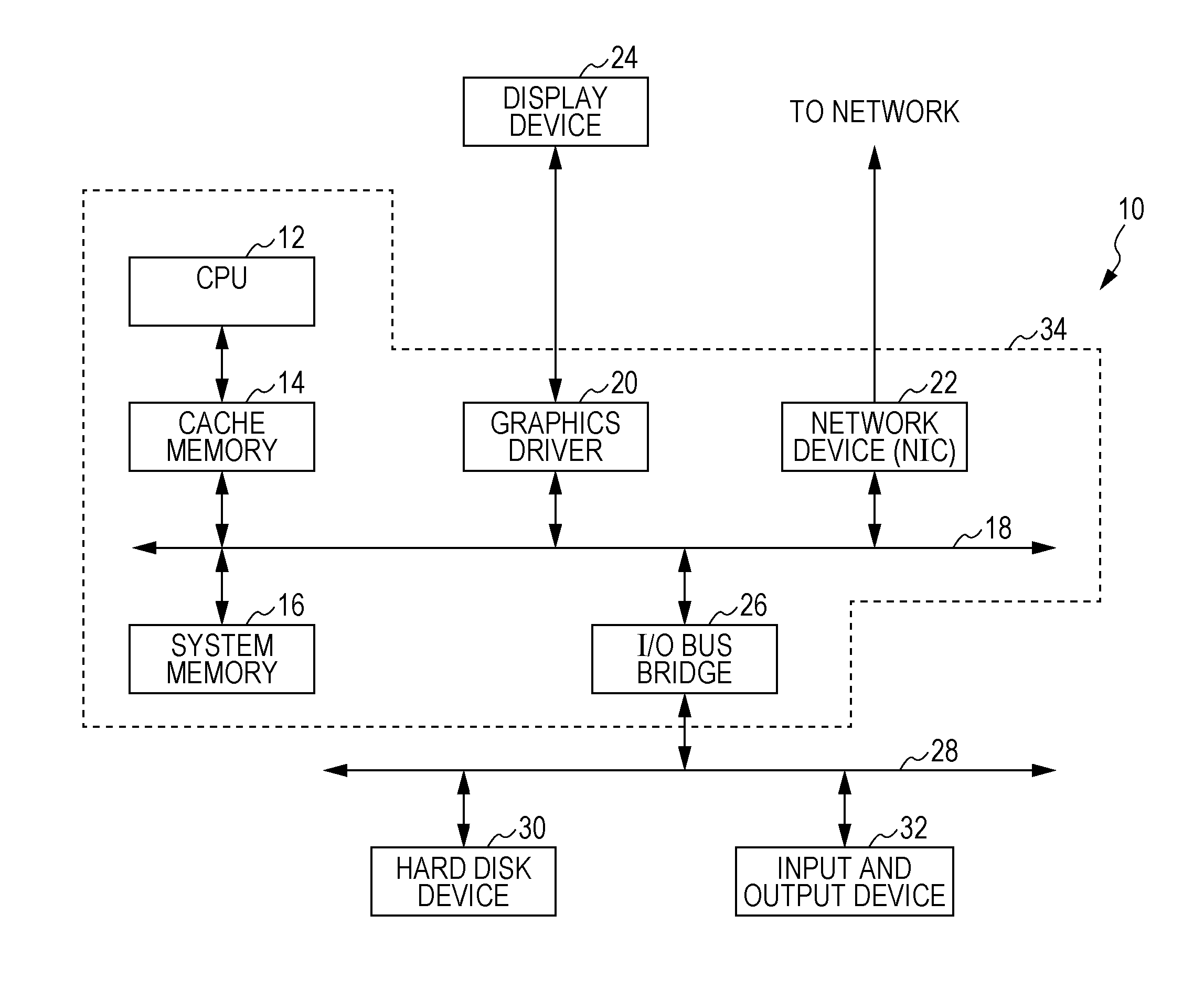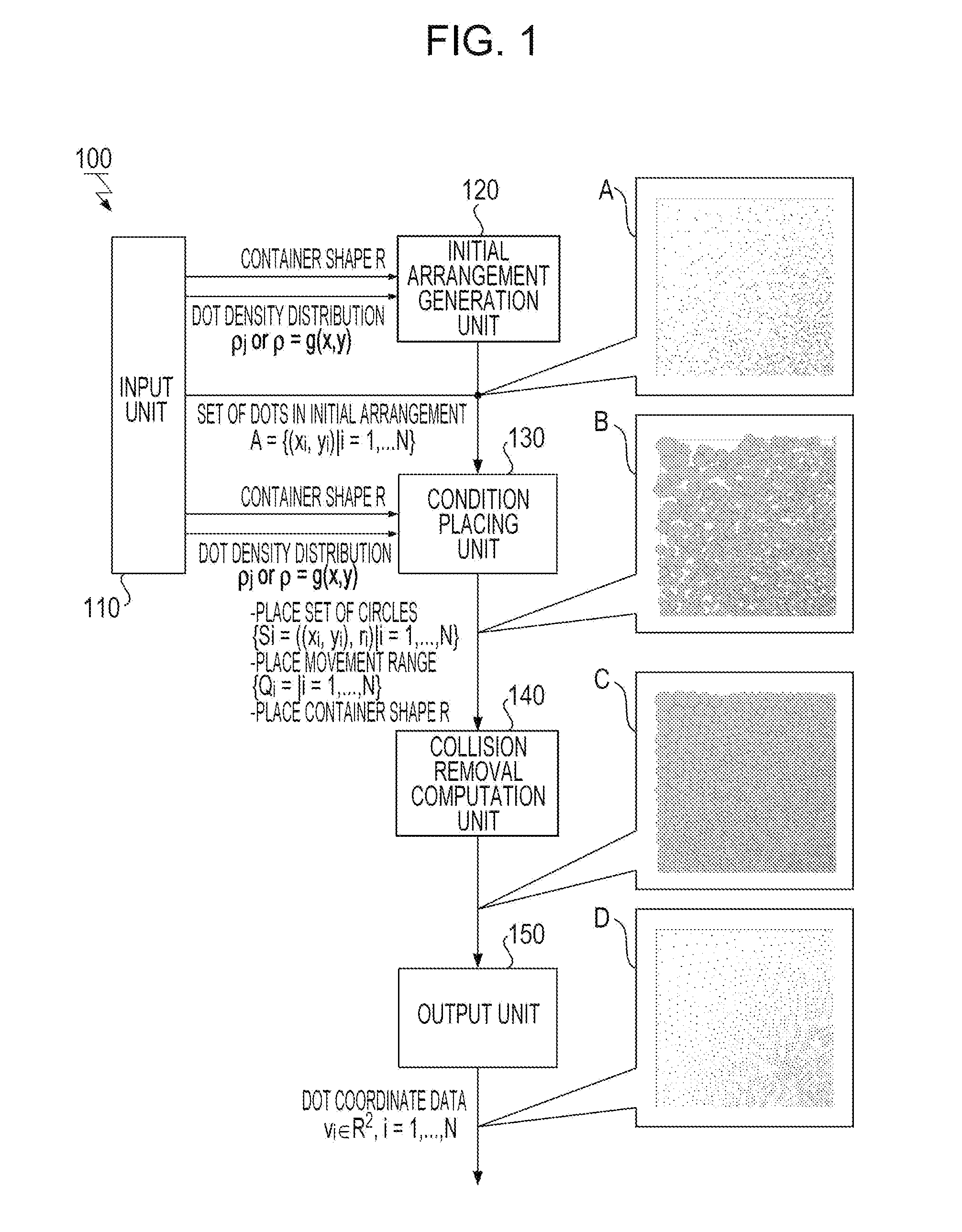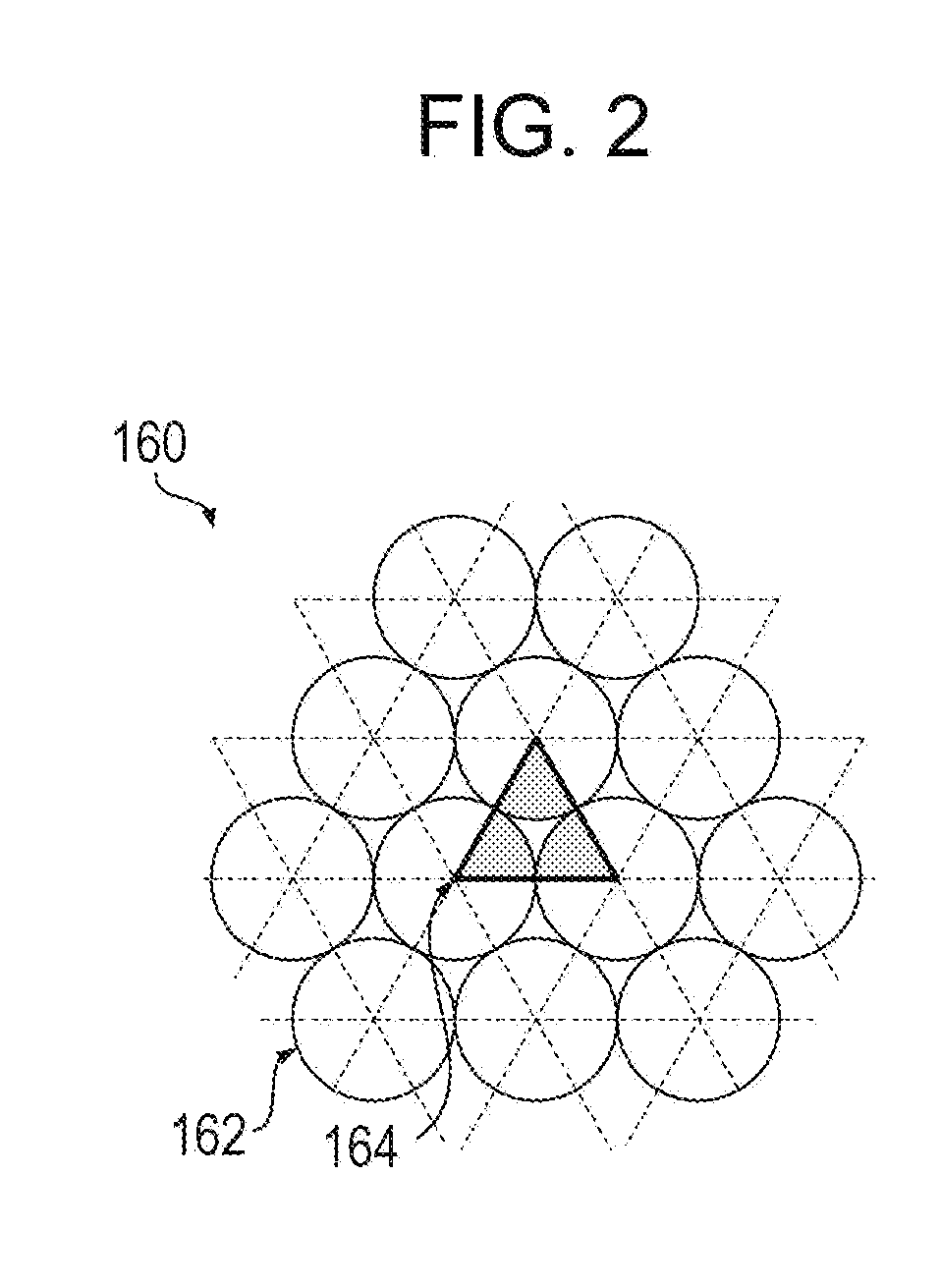[0005]A backlight unit for use in a
liquid crystal display (LCD) employs a scatter dot pattern made of minute scatterers whose filling factors continuously vary on the lower surface of a
light guide plate to reduce optical interference with a member including a
regular pattern, such as a
prism sheet or a
liquid crystal cell, and to make
luminance distribution uniform. In addition, to complement the advantageous effects of the dot pattern, a diffuser sheet having a scatter dot pattern disposed between the upper surface of the
light guide plate and the
prism sheet is also used. The scatter dot pattern has significant effect on the
optical quality of the backlight from the viewpoint of the structure. To improve light utilization efficiency of a device, such as the backlight for use in the LCD, it is desirable to optimize the above scatter dot pattern.
[0006]In light of the fact that an ordered lattice produces strong moire fringes caused by optical interference between the dot pattern and the
liquid crystal cell (FIG. 14(A)), there is a known technique for reducing moire by displacing a lattice point of the ordered lattice provided as the initial arrangement using pseudorandom numbers or by providing a dot position with pseudorandom numbers. However, if dots overlap each other, the overlapping part is visually recognized as a
bright spot or a
dark spot; if the distribution of the dot pattern is non-uniform, it is perceived as luminance non-uniformity (FIG. 14(B)).
[0007]Examples of a technique that aims to obtain a uniform dot pattern are described in Japanese Unexamined
Patent Application Publication No. 2007-306576 (
Patent Literature 1) and No. 2003-66208 (Patent Literature 2). Patent Literature 1 and Patent Literature 2 disclose a technique for making a dot pattern uniform by providing an initial arrangement of dots using a
low discrepancy sequence and then solving the equation of motion in which a repulsive force is made to act between the dots. There is also a technique for optimizing the pattern by seeing a set of dots as a
particle system in which a repulsive force interacts (Japanese Unexamined
Patent Application Publication No. 2007-17380 (Patent Literature 3) and No. 2004-199271 (Patent Literature 4)) and solving its many-body problem. Japanese Unexamined
Patent Application Publication No. 10-153779 (Patent Literature 5) discloses a technique for making a dot pattern random using random numbers such that a predetermined condition for a
radial distribution function is satisfied.
[0008]The above-described issue, which aims to make distributed dots irregular and uniform, is also seen in the field of
image processing. For example, Japanese Unexamined Patent Application Publication No. 2003-18404 (Patent Literature 6) and No. 2000-59626 (Patent Literature 7) disclose a technique for generating a threshold matrix using a dot pattern formed by applying a repulsive force potential in which the shape is adjusted so as to facilitate formation of a periodical dot pattern in a local region to each dot with the aim of enhancing regularity of the dot pattern in the local region and improving the uniformity and
virtual image issue. In relation to other dot patterns, a dot pattern
smoothing method for performing complementary
processing on dots above, below, to the left, and to the right of a dot to be processed according to the rule is disclosed in Japanese Unexamined Patent Application Publication No. 8-227456 (Patent Literature 8), and a process for calculating the length of a space between dots is disclosed in Japanese Unexamined Patent Application Publication No. 2006-310988 (Patent Literature 9). As a method for optimizing an
image pattern, a dithering optimization technique for generating an improved matrix by swapping values in a
dither matrix, forming an objective function, and optimizing that objective function with the aim of providing an improved dithering optimization method for displaying an image on a discrete level output display by the use of a process for efficiently assigning an intensity value element in the
dither matrix is disclosed in Japanese Unexamined Patent Application Publication No. 6-318249 (Patent Literature 10).
[0009]The techniques disclosed in Patent Literature 1 and Patent Literature 2 correspond to solving a potential by the steepest-decent method and can provide a dot pattern that has a good quality to some extent. However, for the known techniques of Patent Literature 1 and Patent Literature 2, it is necessary to calculate a repulsive force that acts between many points in solving the equation of motion as a multi-body problem, and computational complexity surges on the order of the square of the input size at worst. In recent years, because the number of dots required in the above scatter pattern has increased with the increase in the size of a
liquid crystal display, the calculation time in the above-described known techniques is undesirably long, and these techniques are unsatisfactory from the viewpoint of supporting the increase in the device size.BRIEF SUMMARY OF THE INVENTION
[0010]In order to overcome these deficiencies, the present invention provides an information processing apparatus for calculating a spatial arrangement of a plurality of elements of a discrete pattern, the plurality of elements being arranged in a spatially discrete manner, the information processing apparatus including: a placing unit configured to determine, for each of the elements, a density in an initial position given to the element from a
density distribution of the elements in a region where the elements are arranged in the discrete pattern and configured to place, for each of the elements, a figure and a movement range of the figure, the figure having a size corresponding to the density and representing a region where the element repels other elements; a computation unit configured to minimize an objective function for imposing a penalty on each of a collision between the figures and a protrusion of the figure from the movement range using a position of each of the figures as a decision variable and configured to compute an optimal solution of the position of each of the figures; and an output unit configured to output the optimal solutions of the positions of the figures as the spatial arrangement of the elements.
 Login to View More
Login to View More  Login to View More
Login to View More 


